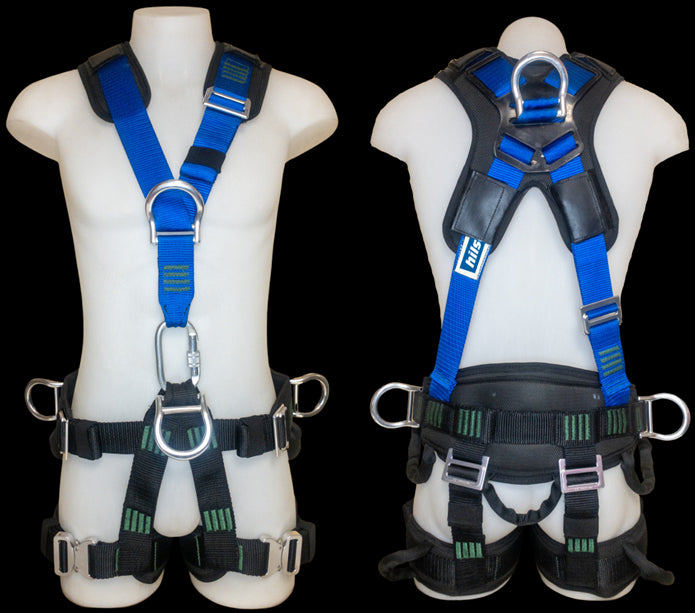Your Cart is Empty
Free shipping on orders over R1000.
USE CODE: D8WPHREK42ZT for 1 time discount

Safety Gear is literally your lifeline, the one thing standing between you and certain injury. Weather you are working at heights, or using equipment for recreational climbing or even in adventure parks, it is above all the first check that should be done before using the equipment. Let's start with the harness.
So... what do I look for on a harness?
Check harness webbing for:
* any cuts, fraying or abrasions.
* Stitching (Breaks, loose ends, melted points)
* Broken fibres or cracks
* Discoloration could be a sign of UV exposure of heat damage
* Hard and shiny spots is a definite indication of heat damage.
* Overly stretched
* Webbing being uneven
* Burnt, charred or melted fibres
* Missing straps
* Unnatural modifications
Check hardware for:
* Corrosion and rust
* Bends and kinks
* Broken or distorted grommets
* Tongue Buckle should overlap buckle frame and move freely back and forth in frame
* Any roughness or sharp edges
* Cracks and breaks.
* All bars must be straight and all springs in working condition where applicable.
Rust forms when metals are exposed to oxygen and moisture. There is a chemical change in the metal that starts to take place. The metal looks solid to the eye but water molecules are able to penetrate tiny gapes in the metal causing corrosion. Exposure to salts such as seawater, sulfur dioxide, and carbon dioxide increases the speed at which corrosion occurs. This weakens the structural integrity of the metal. To the naked eye, it looks brown and has bumps on it. The metal continues to deteriorate internally effectively weakening its strength and therefore safety is compromised.

When rust just starts to form you should see brown speckles on the metal (refer to figure 2.1). This is known as surface rust, the best way to treat this is with a wire brush. Clean the rust away and then wipe with a damp cloth.
Upon re-inspection, you should be able to see if pitting has occurred or not. Pitting is when you see holes or dents in the metal where the rust has formed. If this has happened the structural integrity of the harness has been compromised and needs to be removed from service. If flaking has occurred the harness also needs to be removed from service.

Preventing Corrosion on hardware:
Doing a daily safety check on equipment before use.
Yes, Yes, we know that seems like overkill, consider what’s at stake – your own life, or that of a colleague.
And remember that harnesses can and sometimes do fail – due to wear and tear, due to modifications, due to missing parts. Although rare, even a brand new harness can fail if there are any mistakes in the manufacturing process. In fact, here’s one from the fail file:
Brand new but broken: We inspected this brand new harness only to find the buckle had been glued but not been securely stitched to its webbing – a potentially fatal error not picked up by the manufacturer’s quality control process.
This is one of the most comprehensive checklists we have found:
Daily Harness Inspection Check List
Always follow the manufacturer’s recommendations on how to clean, store and care for a harness. And don’t forget to check your harness for corrosion damage.